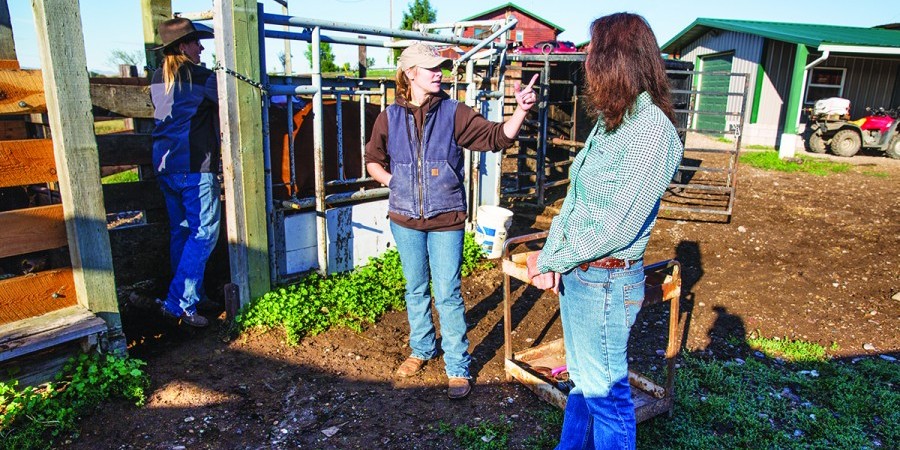A Business Operated by Women
Many of the cows on the Milk River Genetics Ranch live to be twenty years old. That’s old for cows. Kathy Creighton-Smith, the business owner, has patience and compassion for the cows that live in her pastures. Maybe that’s why they live so long.
Creighton-Smith was fortunate to attend Colorado State University at Fort Collins, Colorado, when an embryo transfer lab was established. When she graduated, embryo transfer was so new that few had the skills that she had learned while working in the lab. She was offered several jobs, but her husband’s family had a ranch in North Central Montana, and that was where she wanted to make her life, so in 1991 she started her own cattle embryo transfer business near Chinook, Montana, and named it Milk River Genetics.
Embryo Transfer in animals has been around since the late 1800s, but the technology didn’t become commercially available until the 1970’s. The main advantage to embryo transfer is the ability to increase the genetic influence of the female. There are an estimated 150,000 potential “eggs” or ova carried by a cow. The normal number of offspring for a cow is ten to twelve calves in a lifetime, whereas with the use of embryo transfer, a genetically important cow can safely transfer her superior characteristics to hundreds of calves.
First, a cow is identified by the characteristics that a rancher is seeking. If not already at Milk River Genetics, she is usually taken to the ranch. A hormone regimen is given to the cows to produce multiple eggs (superovulation). The eggs are fertilized via artificial insemination with semen from a bull with the sought-after characteristics. Seven days later, the embryos are flushed from the cow. Normally seven to eight embryos are available at the time. Interestingly, a cow never goes through menopause but continues to produce eggs throughout her life. Still microscopic, the flushed embryos are studied under a microscope for development and quality. The fertilized embryos are then catalogued and frozen in straws until transferred into the recipient cow. The recipient cow is the “surrogate” who will carry the calf to term and raise the calf as if it were her own even though the recipient is not genetically related to the embryo calf. That is the process of embryo transfer.
Some donor cows stay at Milk River Genetics and some go back to their ranch. “Our goal is to send home donor cows that are sound, bred back, and in optimal body condition. We also hope to provide a ‘stockpile’ of frozen embryos,” said Creighton-Smith.
The busy time of the year for Milk River Genetics is April-July when Creighton-Smith and her employees travel with their mobile lab to different ranches which have contracted with the company. The recipient cows have been given hormones so they are all in heat at the same time. This is called synchronization and is utilized to provide a recipient with an acceptable uterine environment for the transferred embryo. After the cows receive an epidural block, Creighton-Smith, or one of the employees, transfers the embryo up the uterine horn on the side that ovulation occurred. They can either do fresh embryo transfer where they take the embryos directly from the donor cows and transfer them into the recipient cows or they can use those embryos that have been previously flushed and then frozen.
“This is a process done by feel,” said Creighton-Smith. “It takes doing around five hundred of them to be competent. Women’s hands are smaller than men’s which helps: however, women aren’t as strong, which limits the number of embryos that can be transferred in a day.”
For the embryo transfer process to be worthwhile, it must increase the number of pregnancies and improve the herd with the desired characteristics. Around 60% of the embryos transferred will result in a pregnancy.
Impregnation during those spring months means that the cows will deliver January- March of the following year. The recipient cows must have special characteristics too. They must be able to birth a calf successfully, to be a good mother, and to produce milk for the calf. Whether the recipient cow has these characteristics is another decision the rancher has to make.
The semen that is used comes from companies that collect, process, and freeze bull semen for global distribution. Ranchers pick out the characteristics they want in their herd and order the bull semen that matches.
Creighton-Smith and her two employees—Royce Houtzel, who is the donor manager, and Angie Lundberg—are not veterinarians, but are qualified in their field through testing done by the state. There are five other such businesses in the state, and surprisingly one other is also an all-female company. These companies are supervised by the Montana State Veterinarian Board.
Because the miles are long to ranches across Montana, Creighton-Smith and Houtzel often listen to books on tapes. Invariably, they are at the point in the story that has a twist, the main character dies, or something traumatic happens in the story at the moment they drive into ranch headquarters. Men from the ranches come out to greet them as the women are wiping away the tears. “I can see it in their expressions,” said Creighton-Smith. “These men are asking themselves, ‘What is wrong with these women’.”
When the three workers are not out at ranches transferring the embryos to recipient cows, they are busy with caring for the cattle at Milk River Genetics or generating, flushing, testing, and freezing embryos. “I also sell embryos across the country, to Canada, and to Brazil and Argentina—all cattle-raising countries,” said Creighton-Smith, “so this has become more than a regional business.”
“I couldn’t do this all myself, so I am fortunate to have good employees,” said Creighton-Smith. “Royce has a new baby, and she brings her to work with her. It is a repeat of having a baby around the office when my daughter was small.”
“We have such compassion for the donor cows that live on our ranch. To do our work, we have to put them in a chute, which they don’t like. We always feed them a treat, so they will have something positive to remember about going into the chute,” said Creighton-Smith. “We are patient with the cows as we go about the process of receiving and transferring embryos, and we do our best to minimize the stress on them.”
These cows do not live in feedlots. Regardless of ownership, they live in spacious irrigated pastures until they go back to their home ranch, and many stay at Milk River Genetics until they die of old age.
Milk River Genetics can be reached by calling the office at 406-357-2504 or via Creighton-Smith’s cell phone at 406-949-2505. The company can also be reached through its email at [email protected] or its webpage: www.milkrivergenetics.com.

